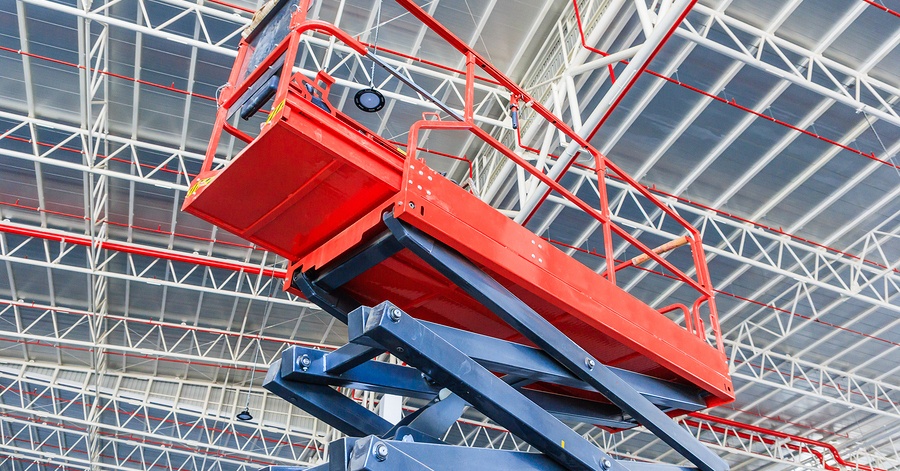
Despite increased awareness and emphasis on safety in our nation, the amount of workers dying from falling from a height of six feet or more has actually been on the rise. The Bureau of Labor Statistics has found a large percentage of fatalities are due to unsafe practices of the operators themselves.
We cannot overstate the importance of safety training, especially scissor lift safety. Continue reading for a list of helpful scissor lift safety do's and don'ts. While our scissor lift safety list is helpful, you should never expect this list to replace the depth or scope of customized scissor lift safety training for your employees.
Scissor Lift Safety Hazards to Avoid
It’s important to recognize the most common mistakes scissor lift operators make that can lead to injuries and deaths. The scissor lift safety don'ts are listed below:
Open gates Is a Scissor Lift Safety Don't
The gates of the lift basket must be closed at all times. The gates should only be opened at the fully lowered position to allow the operator on or off.
Ladders or Step Stools in the Basket Is a Scissor Lift Safety Don't
Scaffolds and lifts are designed to reach specific heights, and loose additional heighteners are extraordinarily unsafe. Never use ladders or step stools inside the basket.
Climbing onto or Leaning too Far over Guard Rails Is a Scissor Lift Safety Don't
Operators can fall when improperly balanced. Climbing onto the guardrails or leaning too far over them increases risk of a fall.
Making Bodily Contact with Electrical Conductors or Entering the Induction Field.
While many lifts have rubber wheels, it’s still never a good idea to come into contact with a live electric current.
Operating in Bad Weather or Low Visibility Is a Scissor Lift Safety Don't
Operating a lift at any height in poor weather outdoors is never recommended. Similarly, any situation of low visibility inside or out is not safe for scissor lift operation.
Inexperienced or Untrained Operators
Scissor lifts require special training for operation as well as for safety. If your employees do not have current or sufficient safety training, you're placing them at greater risk of encountering injury or even death.
Scissor Lift Safety Do’s
There are, of course, things that should always be done before and during scissor lift operation to increase scissor lift safety. These are the do’s:
Properly Inspect Scissor Lift
Make sure the machine itself is in proper working condition as a part of your daily workplace safety checklist. The lift should be strong and stable without any imbalances or distortions. The basket should be in a condition sufficient to stay safely and work above the operator’s head, guard rails should be secure, and so on.
Surveying Work Area Prior to Starting Work
Operate on a flat level only. Uneven surfaces are extremely dangerous. Make sure the working area is clear of obstacles, and that no other employees are working in the area. Note: additional safety from a spotter on the ground to assist is ideal, but aside from that, no one should be working on anything else in the same area at the same time.
Properly Maintaining Guardrails
If an employee is going to work outside the guardrails for any reason, then full body harness, fall supports, and the necessary personal protective equipment must be used. The safety rope or strap should be attached at a stationary anchorage point.
Keep in mind, going outside the guardrails dramatically increases risk of a fall, and even with a safety harness to stop a fall, severe injury can still occur.
Smooth, Safe Speed, Moving Only When Lift Is Fully Lowered
Don’t let the operator move around while lifted in the air. Even if a short move is necessary, the operator should lower the basket before moving.
Always Use a Safety Chain for Tools
Always make sure to use a safety chain for tools properly stored inside of the basket — fully within the guardrails. Anything that falls from up high can injure a worker on the ground. Don’t let anything fall.
Stay Aware of the Scissor Lift Limitations
Safe operation is primarily the responsibility of the operator. However, if the operator is not adequately trained in general safety or the specifics of the particular lift, then the employer may also assume some responsibility. It's best to avoid injuries, deaths, legal issues by only allowing fully trained and responsible employees to operate a scissor lift.
Contact PSP for Scissor Lift Safety Training
When it comes to protecting your workforce, the experts at Premier Safety Partners offer the premier training solutions. Even though no approach can completely erase the possibility of scissor lift accidents, a trained and aware workforce is exponentially less likely to make mistakes that results in accidents.
Contact Premier Safety Partners to learn more about fully-customizable scissor lift training solutions.





